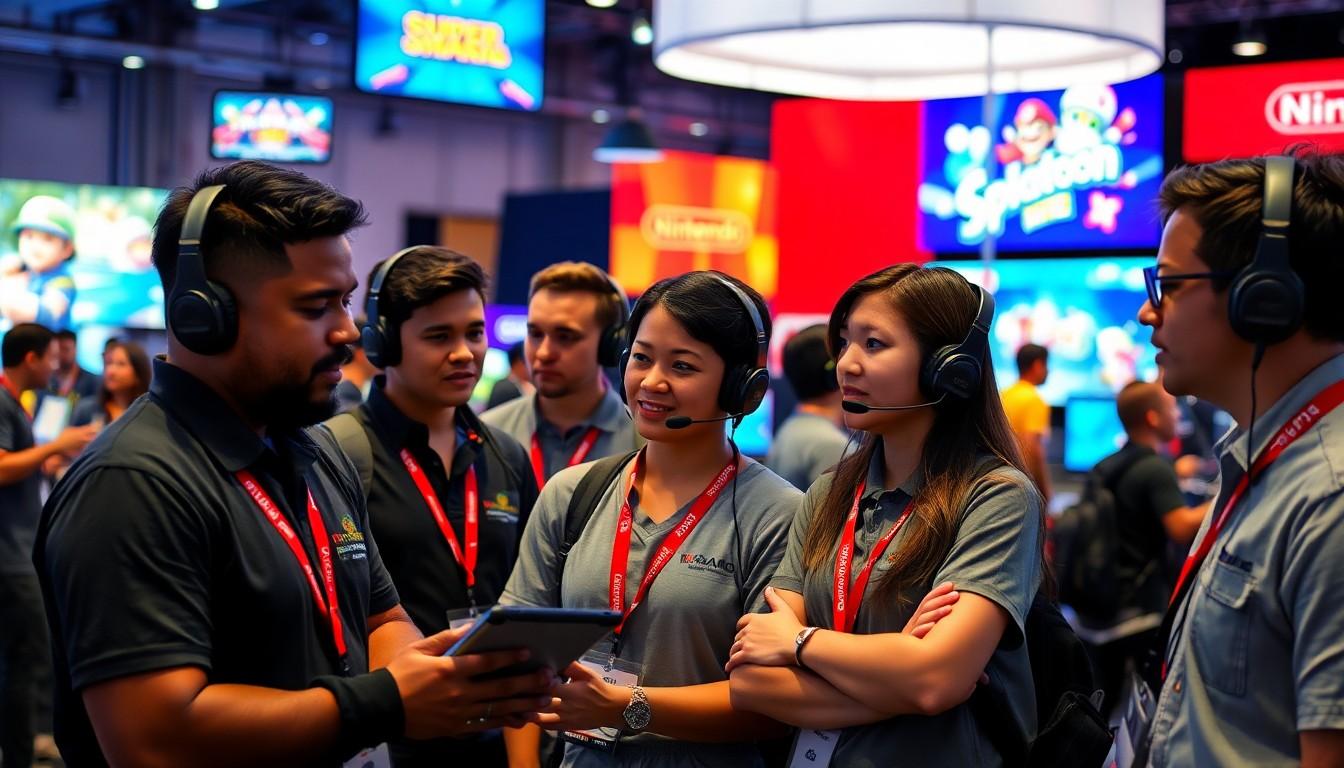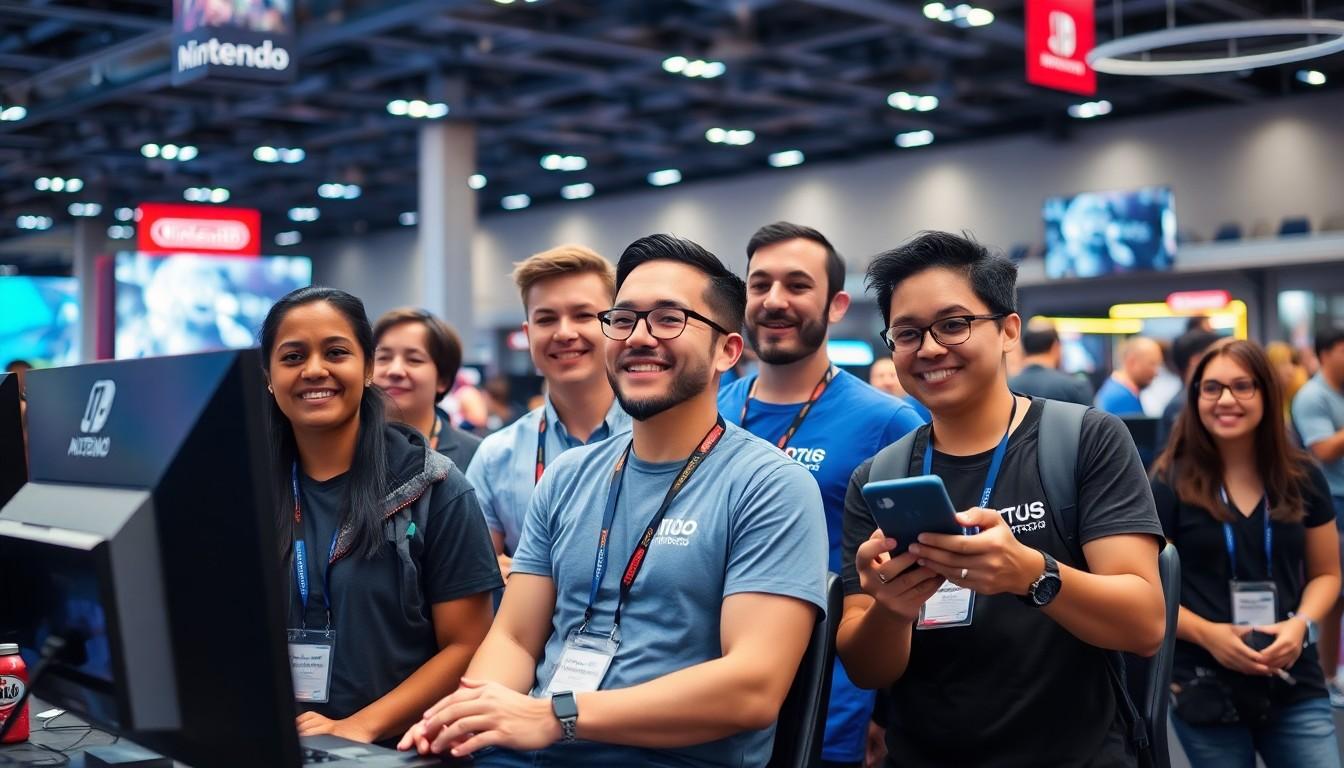
Nintendo Esports Events Threats: Staff Struggles and Solutions Unveiled
In the vibrant world of Nintendo esports, where pixelated heroes clash and fans cheer like it’s the Super Bowl, lurking beneath the surface are some unexpected threats to the very staff who make these epic events happen. Picture this: a dedicated team working tirelessly to bring joy and excitement to gamers, only to find themselves dodging more than just virtual fireballs.
From the chaos of competitive gaming to the whimsical world of Nintendo, the stakes are high, and so are the challenges. Threats can come in many forms—ranging from online harassment to the occasional rogue Koopa Troopa. Understanding these issues is crucial for creating a safer environment, ensuring that both staff and players can focus on what they do best: having a blast. So, let’s dive into the quirky yet serious realm of Nintendo esports and uncover the threats that need addressing.
Overview of Nintendo Esports Events
Nintendo esports events encompass various competitions across popular titles like Super Smash Bros. and Splatoon. These events attract a diverse range of players, from casual enthusiasts to professional gamers. Organizers face multiple challenges while coordinating, including technical requirements, venue logistics, and participant safety.
The presence of online harassment represents a significant concern. Staff members often encounter threats during and after events, impacting their ability to create a welcoming atmosphere. Recognizing this issue is essential for fostering safety in competitive gaming.
Moreover, event disruptions can arise from unanticipated technical failures or gaming-related disputes. Participants may express frustration over game balance or performance issues. Effective communication strategies can alleviate these tensions, allowing staff to address concerns promptly.
Security measures play a crucial role in safeguarding both players and staff. Implementing policies that promote respectful behavior is vital. Creating clear guidelines helps set expectations for participant conduct, reducing the likelihood of negative incidents.
Training staff on threat recognition and response is important. Preparation involves educating them about potential risks and strategies to handle challenging situations. Empowering staff leads to improved confidence and effectiveness when encountering threats.
Ultimately, Nintendo esports events thrive on community engagement. Building a supportive environment encourages players to connect and compete positively. Prioritizing the well-being of everyone involved creates a more enjoyable experience for all.
Understanding Threats to Staff

Recognizing threats to staff is crucial within Nintendo esports events. A range of risks exists that can disrupt the experience for everyone involved.
Types of Threats
Online harassment represents a common issue affecting staff during these events. Harassment manifests in various forms, including abusive comments and targeted attacks via social media. Physical threats, while less common, also occur, emphasizing the need for proactive measures. Disruptions from uncooperative participants can create unsafe environments, impacting staff morale and focus. Additionally, cybersecurity threats pose risks to both personal data and event integrity, making awareness and training essential.
Impact on Staff and Events
The effects of these threats can be significant for staff. Stress levels increase, leading to burnout and decreased job satisfaction. Event organization suffers when staff feel unsafe or unsupported, resulting in a negative atmosphere for participants. Safety concerns hinder staff’s ability to create engaging experiences, shifting focus from facilitating competitions to managing crises. Trust within the community erodes as incidents become prevalent, diminishing participant turnout and enthusiasm. Effective communication strategies will mitigate these impacts, ensuring a supportive environment for staff and players alike.
Case Studies of Notable Incidents
Numerous incidents illustrate the challenges faced by staff during Nintendo esports events. One prominent case involved an online harassment campaign targeting event organizers for Super Smash Bros. Issues arose when aggressive comments flooded social media platforms, leading to heightened stress among the staff. This situation disrupted not only event planning but also participant engagement.
Another example occurred during a Splatoon tournament, where a physical threat emerged. A disgruntled attendee confronted staff due to perceived favoritism toward another competitor. Staff managed to de-escalate the situation, but this incident highlighted the necessity of security protocols at venues. Implementing effective measures can mitigate similar occurrences.
Cybersecurity risks also present critical threats to event staff. During a major online tournament, hackers attempted to disrupt the livestream, compromising the experience for both players and viewers. Quick action from the technical team prevented significant damage. This incident demonstrated the importance of cyber preparedness in safeguarding events.
Lastly, the erosion of trust within the community has been evident after these incidents. Frequent reports of harassment and threats decrease participant enthusiasm and turnout. Building a supportive atmosphere requires prioritizing staff and player well-being while fostering transparent communication. Engaging the community through workshops on respectful interactions contributes to a safer event environment.
Addressing these notable incidents remains vital in shaping a healthier competitive landscape. By understanding past experiences, organizers can implement strategies that directly address threats while promoting positive interaction among players and staff.
Response Strategies by Nintendo
Nintendo actively implements various response strategies to ensure a safe environment for staff during esports events. Recognizing the importance of addressing threats swiftly is critical.
Safety Protocols
Safety protocols are integral to preventing incidents at Nintendo events. Comprehensive security measures enhance protection against physical threats, including on-site security personnel and surveillance. Additionally, clear emergency procedures exist for staff to follow in case of crises. Conduct guidelines set expectations for behavior during competitions, fostering a respectful atmosphere. Training sessions on threat recognition empower staff to identify and address problems in real-time. Implementing reporting mechanisms allows participants to voice concerns safely. Regular reviews of these protocols keep them effective against emerging threats.
Staff Support Programs
Staff support programs provide essential resources to combat stress and burnout. Nintendo prioritizes mental health by offering access to counseling services and peer support networks. Regular workshops equip staff with coping strategies for dealing with harassment and high-pressure situations. Furthermore, creating channels for anonymous feedback ensures staff can share their experiences and suggest improvements. Recognition initiatives highlight the contributions of event staff, fostering a sense of community. By investing in these programs, Nintendo strengthens its commitment to employee well-being, ultimately enhancing the overall event experience.
Future Outlook for Nintendo Esports Events
Nintendo’s approach to esports events focuses on addressing the challenges staff face. Recognizing threats like online harassment and physical attacks is crucial for creating a safer environment. Implementing effective communication strategies enhances participant engagement and fosters a more inclusive atmosphere.
Security measures play a pivotal role in the future of these events. On-site security personnel ensure immediate responses to any disruptions, while clear conduct guidelines promote respectful interactions. Training for staff emphasizes threat recognition, equipping them to manage various situations efficiently.
Support programs aimed at staff well-being are also integral to the future of Nintendo esports events. Counseling services and peer support networks offer vital resources for coping with stress. Accessibility to workshops enhances employees’ ability to handle high-pressure situations effectively.
Monitoring and reviewing existing protocols allows for adaptability. Establishing anonymous feedback channels provides staff with a platform to voice concerns, fostering trust within the community. This iterative approach to improving safety measures ensures that the environment remains welcoming for all participants.
Investing in community engagement strengthens the overall experience at Nintendo esports events. Prioritizing collaboration with players and organizers builds a foundation of trust and enthusiasm. Future strategies will undoubtedly incorporate these priorities, guiding the evolution of Nintendo’s esports landscape.
Ultimately, making staff well-being a priority contributes to a healthier competitive environment. The combination of robust security measures, effective communication, and dedicated support initiatives shapes a positive experience for everyone involved. Emphasis on these areas will drive the successful growth of Nintendo esports events moving forward.
Conclusion
The challenges faced by staff in Nintendo esports events highlight the urgent need for comprehensive safety measures and support systems. By addressing online harassment and physical threats, organizers can foster a more inclusive and welcoming environment for all participants.
Investing in staff well-being through counseling and peer support not only enhances job satisfaction but also improves event quality.
As the esports landscape continues to evolve, prioritizing effective communication and community engagement will be essential.
With a commitment to safety and support, Nintendo can ensure a vibrant future for its esports events, benefiting players and staff alike.
